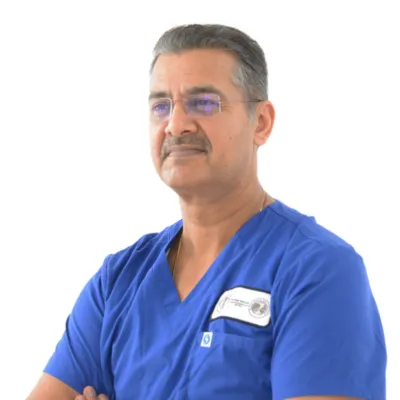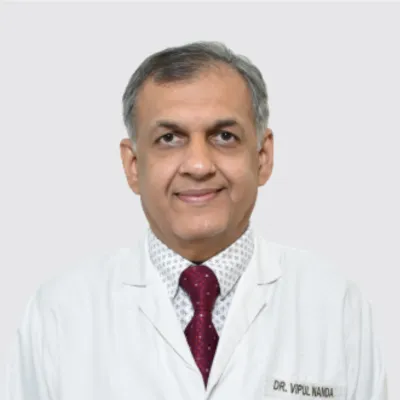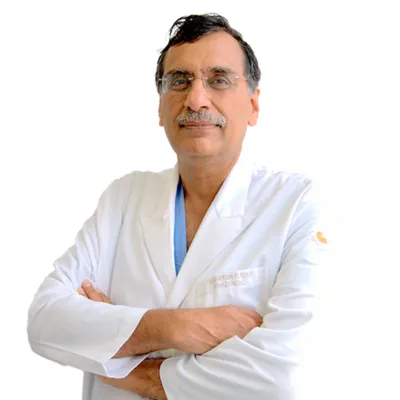Understanding the Importance of International Accreditation Bodies and Their Role in Ensuring Quality Healthcare and Patient Safety
 21 April,2025
Read More
21 April,2025
Read More
Enquire now in case of any assistance needed
Starting From: USD 900 - USD 1500
Hospitalization Days: 1 Days
Procedure Duration: 2 Hrs - 3 Hrs
Arm Lift Surgery is affordable in India. The cost of Arm Lift Surgery in India lies between USD 900 - USD 1500. The exact procedure price depends on multiple factors such as the surgeon's experience, type of hospital, severity of the condition, patient's general condition,�etc.
Arm lift, or brachioplasty is a surgical procedure aimed at tightening and reshaping the upper arms by removing excess skin and fat. Commonly sought after by individuals experiencing sagging or loose skin due to ageing, weight loss, or genetics, arm lift surgery can restore a more toned and youthful appearance to the arms. The procedure involves making incisions along the inner or back of the arms, followed by the removal of excess tissue and skin tightening. Arm lift surgery can enhance both aesthetic appearance and self-confidence, providing long-lasting results for those seeking improved arm contours.
Arm lift surgery, also known as brachioplasty, is sought after for various reasons:
Overall, arm lift surgery can provide both aesthetic and functional benefits, helping individuals achieve a more sculpted and proportionate appearance while enhancing self-confidence and quality of life.
Arm lift surgery, or brachioplasty, encompasses various techniques tailored to address specific concerns and achieve desired outcomes:
Each type of arm lift surgery offers unique benefits and considerations, and the choice of technique depends on individual anatomy, goals, and the surgeon's recommendation. Consulting with a qualified plastic surgeon is essential to determine the most suitable approach for achieving desired outcomes.
Several factors influence the cost of arm lift surgery, including:
Overall, patients should discuss all potential costs with their surgeon during the consultation process and ensure they understand the full scope of expenses involved in the procedure.
Patients undergoing arm lift surgery, or brachioplasty, are carefully selected based on several factors to ensure safe and satisfactory outcomes:
Overall, patient selection for arm lift surgery involves a thorough assessment of physical, psychological, and medical factors to determine candidacy and ensure the best possible outcomes. Communication between the patient and surgeon is essential to address concerns, set realistic goals, and develop a personalized treatment plan.
Diagnostic tests and evaluations play a crucial role in determining the need for arm lift surgery, or Brachioplasty:
Arm lift surgery, like any surgical procedure, carries both risks and benefits that patients should consider before undergoing the operation:
Ultimately, patients should carefully weigh the risks and benefits of arm lift surgery in consultation with their surgeon, considering their individual concerns, goals, and medical history.
Recovery and rehabilitation following arm lift surgery, medically termed Brachioplasty, are crucial phases that contribute to successful outcomes and patient satisfaction. Here's a comprehensive overview of the recovery process:
By adhering to postoperative care instructions, attending follow-up appointments, and practising patience during the recovery period, patients can optimize their healing process and achieve the desired results from arm lift surgery.
Arm lift surgery, or Brachioplasty, is a transformative procedure designed to sculpt and contour the upper arms by removing excess skin and fat. While the surgery offers significant aesthetic benefits, understanding the recovery process is essential for a successful outcome.
1. Recovery Process: After undergoing an arm lift, also known as brachioplasty, it's essential to understand the recovery process to ensure a smooth healing journey. Here's what you can expect in the aftermath of the procedure:
2. Immediate Postoperative Period:
3. Managing Discomfort:
4. Swelling and Bruising:
5. Resuming Activities:
6. Scar Care:
7. Follow-up Appointments:
By understanding these expectations and following your surgeon's guidance, you can achieve a smoother and more comfortable recovery after an arm lift procedure.
Arm lift surgery, or brachioplasty, is a cosmetic procedure aimed at improving the contour and appearance of the upper arms by addressing issues such as excess skin and fat. The procedure involves several key steps, ensuring a comprehensive and tailored approach to each patient's unique needs.
1. Initial Consultation: The process begins with an in-depth consultation between the patient and the plastic surgeon. During this discussion, the surgeon assesses the patient's concerns, medical history, and aesthetic goals to determine the most suitable approach for the arm lift.
2. Anesthesia: Arm lift surgery is typically performed under general anesthesia to ensure the patient's comfort and safety throughout the procedure.
3. Incision Placement: The surgeon strategically plans incisions along the inner arm, often within the natural creases, to minimize visible scarring. The length and pattern of incisions depend on the extent of correction needed.
4. Tissue Reshaping: Once the incisions are made, the surgeon carefully removes excess skin and fat, sculpting and reshaping the underlying tissues. In some cases, liposuction may be utilized to enhance contouring.
5. Muscle Tightening (Optional): Depending on the patient's needs, the surgeon may tighten the underlying supportive tissues (muscles) to create a more toned appearance.
6. Closure and Dressing: After achieving the desired contour, the surgeon meticulously closes the incisions with sutures. Dressings and, in some cases, drains may be applied to aid in the healing process and minimize fluid accumulation.
7. Recovery: Following the procedure, patients are monitored in a recovery area. Detailed postoperative care instructions are provided, covering aspects such as pain management, activity restrictions, and wound care.
8. Follow-Up: Regular follow-up appointments are scheduled to monitor the progress of healing. During these visits, the surgeon can address any concerns, remove sutures or drains if necessary, and provide guidance on the gradual return to normal activities.
The success of an arm lift procedure depends on the surgeon's expertise, the patient's adherence to postoperative instructions, and realistic expectations. As with any surgical intervention, individuals considering an arm lift should consult with a qualified plastic surgeon to discuss their goals and ensure a safe and satisfactory outcome.
Vice Chairman
Cosmetic Surgeon
Medanta - The Medicity Hospital, Gurgaon
Book AppointmentDirector
Cosmetic Surgeon
Medanta - The Medicity Hospital, Gurgaon
Book AppointmentAssociate Director
Cosmetic Surgeon
Medanta - The Medicity Hospital, Gurgaon
Book AppointmentSenior Consultant
Cosmetic Surgeon
Medanta - The Medicity Hospital, Gurgaon
Book AppointmentChairman
Cosmetic Surgeon
Medanta - The Medicity Hospital, Gurgaon
Book AppointmentVice Chairman
Cosmetic Surgeon
Medanta - The Medicity Hospital, Gurgaon
Book AppointmentDirector
Cosmetic Surgeon
Medanta - The Medicity Hospital, Gurgaon
Book AppointmentAssociate Director
Cosmetic Surgeon
Medanta - The Medicity Hospital, Gurgaon
Book AppointmentSenior Consultant
Cosmetic Surgeon
Medanta - The Medicity Hospital, Gurgaon
Book AppointmentChairman
Cosmetic Surgeon
Medanta - The Medicity Hospital, Gurgaon
Book AppointmentVice Chairman
Cosmetic Surgeon
Medanta - The Medicity Hospital, Gurgaon
Book AppointmentDirector
Cosmetic Surgeon
Medanta - The Medicity Hospital, Gurgaon
Book AppointmentDoctor of Pharmacy
Dr. Deepanshu Siwach is a skilled clinical pharmacist with a Doctor of Pharmacy degree.?He has 4+?years of experience and has worked with thousands of patients. He has been associated with some of the top hospitals, such as Artemis Gurgaon.
Dr. Deepanshu Siwach is a skilled clinical pharmacist with a Doctor of Pharmacy degree.?He has 4+?years of experience and has worked with thousands of patients. He has been associated with some of the top hospitals, such as Artemis Gurgaon....
With over 23 years of experience, Dr. Vipul Nanda, an eminent Plastic and Cosmetic Surgeon, excels in surgical and non-surgical procedures, including filler, mesotherapy, laser, and dermatology....
Arm lift surgery, or brachioplasty, typically lasts between 1 to 3 hours. However, the duration may vary depending on factors such as the extent of correction required and the surgical technique employed. Patients should consult with their surgeon for personalized information.
The success rate of arm lift surgery, or brachioplasty, varies depending on factors such as patient health, surgical technique, and adherence to post-operative care. Generally, when performed by a skilled surgeon, arm lift procedures have a high success rate in achieving desired aesthetic outcomes.
Recovery from arm lift surgery involves temporary discomfort, swelling, and bruising, typically lasting a few weeks. Patients are advised to avoid strenuous activities and follow post-operative instructions for optimal healing. Compression garments may be recommended to aid in recovery.
After arm lift surgery, patients are typically prescribed pain medication to manage discomfort during the initial recovery period. Additionally, non-pharmacological pain management techniques such as ice packs and elevation of the arms may be recommended to alleviate pain and swelling.
Patients can usually resume light activities within a week or two after arm lift surgery. However, vigorous exercise and heavy lifting should be avoided for several weeks to allow for proper healing. Individual recovery times may vary.
Physical therapy is not typically required after arm lift surgery. However, gentle arm exercises may be recommended to promote mobility and prevent stiffness during the recovery process. Patients should follow their surgeon's instructions for post-operative care and activity levels.
The results of arm lift surgery, or brachioplasty, are generally long-lasting. However, the longevity of the outcome may vary depending on factors such as aging, weight fluctuations, and overall lifestyle. Maintaining a healthy lifestyle can help prolong the results of the procedure.
In most cases, arm lift surgery is considered a cosmetic procedure and is not covered by insurance. However, if excess skin is causing functional impairments or medical issues, insurance may cover a portion of the cost. Patients should consult their insurance provider for specific details.
After arm lift surgery, maintaining a healthy lifestyle with regular exercise and a balanced diet is essential to sustain the results. Avoiding significant weight fluctuations and practicing sun protection can help preserve the outcome of the procedure
Non-surgical alternatives to arm lift surgery include radiofrequency treatments, laser therapy, and targeted exercises. However, these options may have limited effectiveness in addressing significant skin laxity and excess fat. Consultation with a qualified plastic surgeon can provide personalized recommendations based on individual needs.
Following arm lift surgery, gentle arm exercises such as stretching and low-impact movements are typically recommended to promote mobility and prevent stiffness. However, patients should avoid strenuous activities and consult with their surgeon before starting any exercise regimen to ensure safe and effective recovery.
The Art of Effective Communication
 21 April,2025
Read More
21 April,2025
Read More
 18 April,2025
Read More
18 April,2025
Read More
 18 April,2025
Read More
18 April,2025
Read More
 09 April,2025
Read More
09 April,2025
Read More
 04 April,2025
Read More
04 April,2025
Read More
 02 April,2025
Read More
02 April,2025
Read More





